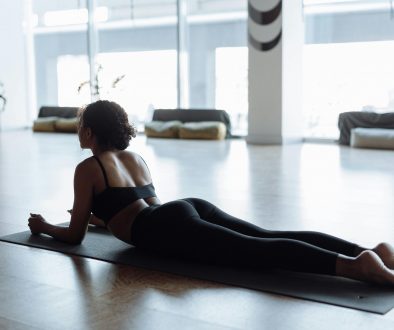Movement is Medicine
It seems as though we all have a lot weighing heavy on our minds these days with 1 in 6 people suffering from common mental disorders such as anxiety and depression. Meanwhile, our levels of physical activity have dramatically decreased as most jobs have become computer-based and sedentary, with much of our leisure time spent sitting on a sofa watching TV. What are the consequences on our health?
You could say there is a direct correlation between low mood and a lack of physical activity and vice versa. In fact, three workouts a week could reduce your risk of depression by 30%, according to the Department of Health.
The mental health benefits of movement
We all know that exercise is vital to our physical health but in more recent years, there has been more focus on the mental health benefits. The popular PT Joe Wicks (PE with Joe) is very open about the mental health benefits of doing a workout:
“I talk about the mental health benefits of exercise. I’ve realised over the years, that people mention those benefits more than the physical; sleeping better, having more energy, feeling happier, less stressed and being more patient with the kids… Exercise for your mental health and the body will follow.”
In fact, even if you have a sore back, one of the key pieces of advice is usually to stay gently active, even when you would rather rest up on the sofa. So it makes sense that when our mental health has taken a dive, we need to apply the same principle: keep moving even when (or perhaps, especially) when it’s hard.
What movement has the most benefits?
This really depends on your headspace, fitness levels, and how much time you have. But whether you are time-poor, caring for little ones, or feeling low, fear not, there is a form of movement that will work for you.
Movement for parents of newborns
Most new parents find themselves very busy, exhausted from a lack of sleep and possibly overwhelmed with all the changes that looking after a little one entails. For new mums, in particular, the hormonal, physical and mental changes can be overwhelming. So first things first, be kind to yourself.
For postpartum fitness, the first port of call is Diaphragmatic Breathing, see our blog on how to breathe correctly here. The benefits of correct breathing for postpartum fitness are second to none. Firstly, diaphragmatic breathing connects all of your core muscles which have been most affected by pregnancy and birth, that is your transverse abdominis and your pelvic floor and helps realign the organs that shifted during pregnancy. Correct breathwork can rebuild strength and connection, reducing the risk of incontinence and organ prolapse.
It’s a good place to start for anyone who exercises, whether they are new to exercise or a regular gym-goer as it really is the most fundamental movement that will especially protect our lower backs. An additional benefit of Diaphragmatic breathing is that it calms the mind by switching on the parasympathetic nervous system (think rest, digest, and recover). This is particularly helpful when feeling overwhelmed or anxious.
Movement for stress & burnout
If you are struggling with burnout or high levels of stress and perhaps have high blood pressure as a result, it’s best to focus on gentle movement such as pilates, yoga, swimming or walking. You can check out our favorite Cheltenham dog walks here. Please note, there are intense versions of those exercises so make sure to listen to your body and focus on relaxing rather than calorie burning.
Pilates, yoga, and swimming are particularly good for your mental health as you have to focus on your breathing. Often when stressed, we breathe incorrectly from the chest rather than the diaphragm. For more information on diaphragmatic breathing – see our blog Diaphragmatic Breathing Technique.
Movement to combat frustration
If you feel frustrated or agitated and are struggling to sleep or have feelings of powerlessness, strength workouts are particularly good at reducing cortisol and adrenaline levels this may be linked to the focus on muscle fatigue when strength training and of course the release of endorphins (more on that later).
You may hear climbers and weightlifters talk about ‘The Pump’. This is when you have exercised to failure or until your muscles can’t do anymore. Everyone has different levels of fitness so instead of comparing your level of weights to someone else, focus on getting ‘The Pump’ and how relaxed you feel afterwards.
Movement to beat loneliness
If you are struggling with loneliness or feel that you haven’t found your “tribe”, boxing, martial arts or crossfit in a specialised training gym, could provide you with an immediate close-knit community. If you are new to exercise, these training gyms usually offer introductory or beginner classes where extra support is given and the classes are smaller.
The science behind exercise and mental health
Here’s the science: exercise triggers the release of neurotransmitters such as endorphins and endocannabinoids. These are chemical messengers sent around the body which block the nerve signals for pain and in doing so, reduce pain and boost mood. The higher the level of endorphins, the lower the levels of stress and anxiety.
Endorphins are released for one of two reasons: when you injure yourself (to reduce the pain) and also when you do a pleasurable activity. When endorphins connect with our inner reward system, they trigger the release of dopamine. Dopamine is the ‘motivating’ messenger, it tells the brain to repeat the rewarding activity over and over. So not only do you feel better after doing exercise there and then, if you repeat this rewarding activity, you will create new neural pathways that make exercise seem more appealing!
Hopefully, this post can help show how movement is medicine to the mind as well as the body.



